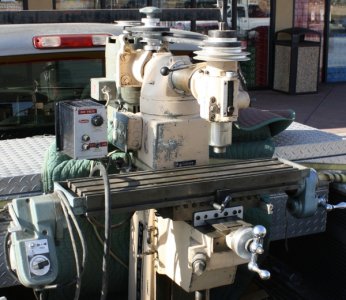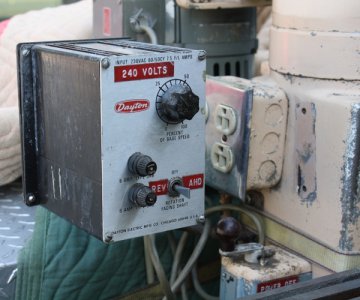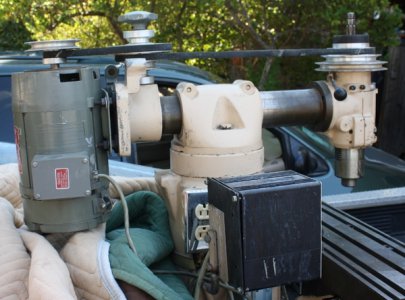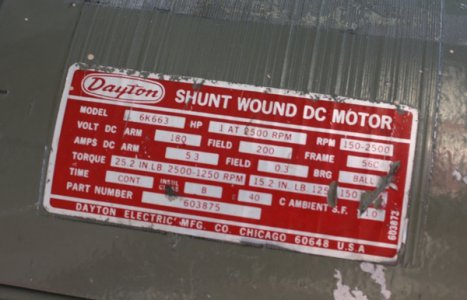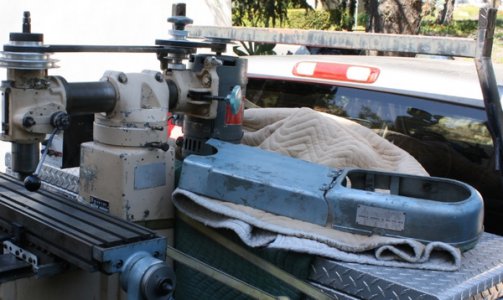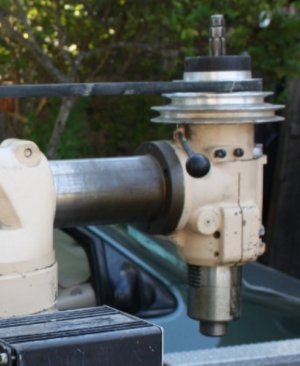As already mentioned, the DC motor is not original to the 85xx series of Clausing mills, and it was added later on by another owner as a method of introducing variable speed for this machine. The motor is 1 HP, and should work well on this machine also, but keep in mind that 1 HP will not be available at lower speeds. You may find it necessary to gear down a bit with the belt system, but a little experimentation will answer that for you. The top speed of the motor is 2500 RPM, whereas the original motor only ran 1725, so you should be able to do some speed reduction with the belt system, and still get a full range of speeds without seeing too many problems with loss of power.
The input voltage to the speed controller is 230/240 VAC as shown. The controller converts AC to DC and feeds it to the motor at the proper voltage for the required speed. This type of controller often uses an SCR for speed control, sending a pulsed DC current to the motor, and they work quite well, but the variac style mentioned by muzzer is common also, though not as good at speed control. The SCR type tend to whine or hum in use, particularly at lower speeds, but are quite a bit more expensive than the variac type.
DC motors come in three basic varieties: permanent magnet, shunt wound, and series wound.
- Permanent magnet motors use magnets for the field, and power is fed only to the armature through the brushes. They are inexpensive and work well in low power applications.
- Series wound motors use a wound field coil that is connected in series with the power that is fed to the armature. These motors are typically used in high speed applications, such as car starter motors. Speed control is poor, and the current draw is usually rather constant regardless of voltage or load. Motor speed will change significantly with the load at a given voltage. To keep the speed constant, the voltage must be varied with the load.
- Shunt, or parallel wound motors wire the field coils in parallel with the armature. They tend to run at a constant speed for a given voltage and the current draw will change with the load.
As you can see, a shunt wound motor is the ideal type for machine tool use, as the speed will remain fairly constant even as the load changes. Granted, there will be some change in speed, but it will generally not be great.
There is much more technical information that could be posted, but the information posted so far in this thread should be enough to answer your question. As always, if you have more questions, feel free to ask!
Good luck with that Clausing mill, I think you will like it, as it is a very robust machine for its size. The 8530 has a heavier knee than the 8520 plus it has a few other improvements including the power feed on the X axis. Problem areas on these machines include the power feed and the gears for the fine spindle feed, they are easily stripped of their teeth. From what I understand replacements are available but come at a hefty price. It is sad that the belt guards are missing on your machine. The front guard also included a brake that allowed you to lock the spindle for tightening or loosening the drawbar. Make sure you keep your hair, hands, and fingers away from those belts when it is running!! Personally I would start hunting for a guard for at least the spindle pulley, or better yet, make a temporary guard that can be used until you can find an original one.
